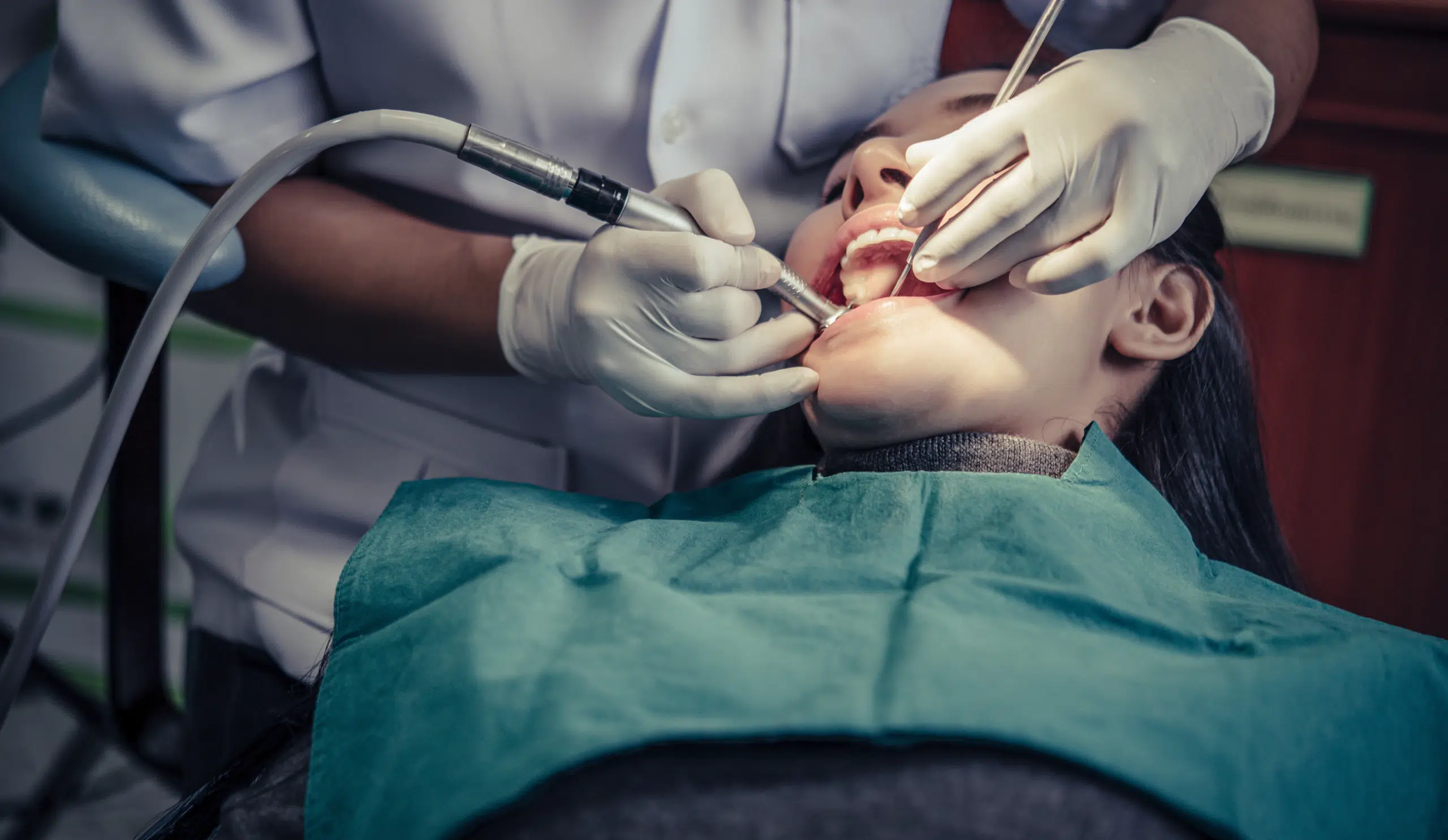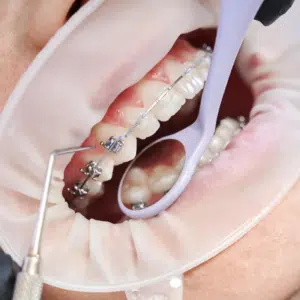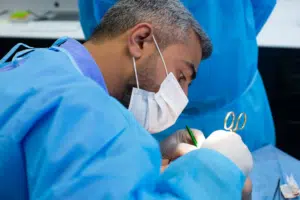
Orthodontic emergencies can happen when we least expect them, and knowing how to handle these situations can make a significant difference in ensuring a smooth treatment journey. Whether you’re a current orthodontic patient or someone considering treatment in the future, understanding how to address common orthodontic emergencies will empower you to take proactive steps and alleviate discomfort during unforeseen events.
While some orthodontic emergencies may be manageable at home, it’s crucial to recognize when it’s time to reach out to your orthodontist for expert guidance. By promptly contacting your orthodontist, you can avoid potential complications and ensure that your treatment stays on track.
Common Orthodontic Emergencies
Understanding the most common orthodontic emergencies that may occur during orthodontic treatment is vital in knowing how to respond effectively. Here are some of the frequent orthodontic emergencies and how to address them:
A. Broken Brackets or Wires
Causes and potential impact on the treatment: Broken brackets or wires can result from eating hard or sticky foods, accidental impact to the mouth, or even improper oral care.
Immediate actions to take: If a bracket becomes detached or a wire breaks, carefully remove any loose pieces to prevent swallowing or injury. Cover the sharp edge with orthodontic wax to minimize irritation, and contact your orthodontist to schedule a repair appointment.
B. Sore or Irritated Gums and Cheeks
Causes and triggers for irritation: New braces, adjustments, or rough spots on braces can cause soreness and irritation to the gums and inner cheeks.
Tips to alleviate discomfort: Rinse your mouth with warm saltwater to reduce inflammation. Applying orthodontic wax over the braces’ edges can create a protective barrier and minimize irritation.
C. Poking or Loose Archwire
Understanding the issue and its possible consequences: Sometimes, the archwire may shift and start poking the cheeks or the back of the mouth, causing discomfort.
Safe methods to address the problem temporarily: Gently push the wire back into place using a clean cotton swab or the eraser end of a pencil. If this is not possible, place orthodontic wax over the protruding end to prevent further irritation and seek professional assistance.
D. Dislodged or Lost Elastic Bands
Importance of these bands in the treatment process: Elastic bands are crucial for correcting bite issues and aligning the jaws properly.
What to do if they become dislodged or lost: If you lose or dislodge an elastic band, contact your orthodontist to obtain replacement bands promptly. Avoid using alternative materials, as they may not achieve the same effect as prescribed by your orthodontist.
Steps to Assess the Severity of an Emergency
Knowing how to gauge the severity of the emergency will help you determine the appropriate course of action. Here are the steps to assess the seriousness of an orthodontic emergency:
1. Stay Calm and Evaluate Discomfort
Take a moment to breathe and remain composed. Identify the source of discomfort or pain in your mouth. Assess whether the issue is causing mild discomfort or intense pain.
2. Identify the Specific Problem
Examine your braces or orthodontic appliances carefully. Determine if there are any broken brackets, wires, or loose components. Check for irritation or soreness in your gums, cheeks, or lips.
3. Check for Bleeding or Swelling
If there is bleeding, rinse your mouth gently with water to clean the area. Apply slight pressure with a clean gauze or a damp tea bag to control bleeding.
4. Evaluate Functional Impairment
Assess if the issue is affecting your ability to eat, speak, or perform daily activities. Consider whether the problem is interfering with the effectiveness of your treatment.
5. Determine the Urgency
Classify the situation as non-urgent or potentially serious. Non-urgent issues may cause mild discomfort but are manageable at home. Potentially serious orthodontic emergencies require immediate attention from your orthodontist.
6. Review Home Remedies
If the problem is minor and falls under non-urgent, consult your orthodontic care guide. Use orthodontic wax to cover sharp edges, and rinse your mouth with warm saltwater.
7. Consider the Time and Day
If the emergency occurs during regular office hours, contact your orthodontist. For after-hours orthodontic emergencies or weekends, check if your orthodontist has an emergency contact number or provides alternative arrangements.
8. Contact Your Orthodontist
Explain orthodontic emergencies clearly when speaking with the orthodontic office staff. Provide details about the specific problem, discomfort level, and any functional impairment.
9. Avoid Self-Adjustment
Resist the temptation to adjust or repair orthodontic appliances on your own. Leave adjustments and repairs to your orthodontist’s expertise.
10. Monitor and Follow Up
If you’ve received temporary solutions from your orthodontist, follow their instructions. Attend all scheduled follow-up appointments to ensure proper progress and resolution.
Contacting Your Orthodontist
Promptly reaching out to your orthodontist when you encounter an orthodontic emergency is crucial to ensure that the issue is addressed properly and promptly. Here’s a step-by-step guide on how to effectively contact your orthodontist during an emergency:
-
Stay Calm and Assess the Situation
Take a moment to breathe and assess the severity of the emergency calmly. Identify the specific problem and the level of discomfort or pain you are experiencing.
-
Refer to Your Orthodontic Care Guide
Check your orthodontic care guide or any informational materials provided by your orthodontist. The guide may include specific instructions on how to handle common orthodontic emergencies.
-
Locate the Orthodontist’s Contact Information
Find the contact details of your orthodontist’s office, including their phone number and email. Keep this information readily available for easy access in case of orthodontic emergencies.
-
Call the Orthodontist’s Office
Pick up the phone and call your orthodontist’s office as soon as possible for your orthodontic emergencies. Explain the emergency situation clearly and concisely to the staff.
-
Provide Essential Details
Describe the specific issue you are facing with your braces or aligners. Mention the level of discomfort or pain of your orthodontic emergency. Inform the staff of any functional impairment affecting your eating or speaking.
-
Be Prepared for an Emergency Appointment
If you are given an emergency appointment, be prepared to visit the orthodontist promptly. Gather any necessary documents, insurance information, and your orthodontic appliance kit, if applicable.
-
Follow Up on Professional Advice
Follow any temporary solutions provided by the orthodontist until your appointment. If the orthodontist suggests over-the-counter pain relief, use it as directed. Avoid self-adjusting or repairing orthodontic appliances, as this may lead to further complications.
-
Stay in Communication
If the emergency persists or worsens, contact your orthodontist’s office again for further guidance. Communicate any changes in your condition or if new issues arise during the interim.
-
Attend Follow-Up Appointments
Attend all scheduled follow-up appointments to monitor the progress of the emergency resolution. Inform your orthodontist of any lingering concerns or discomfort during these visits.
Preventive Measures
- Follow Oral Hygiene Guidelines: Maintain excellent oral hygiene by brushing after meals and flossing daily. Use a soft-bristled toothbrush and fluoride toothpaste to clean around braces or aligners gently.
- Avoid Sticky and Hard Foods: Steer clear of chewy candies and hard foods that can damage braces to avoid orthodontic emergencies. Opt for braces-friendly foods like soft fruits and cooked vegetables.
- Cut Food into Smaller Pieces: Reduce stress on braces by cutting crunchy or tough foods into smaller, bite-sized pieces. Take smaller bites to minimize the risk of appliance damage.
- Wear Mouthguards for Sports: Protect braces from impact during sports with custom-fit mouthguards from your orthodontist.
- Be Mindful of Habits: Avoid nail-biting, pen-chewing, or using teeth to open packages, as they can damage orthodontic appliances.
- Communicate with Your Orthodontist: Don’t hesitate to share any issues or concerns during treatment. Timely communication allows them to address your questions.
- Stay Committed to Treatment: Adhere to your orthodontist’s treatment plan and wear aligners or braces as instructed to achieve desired results within the estimated time.
Enjoy exceptional orthodontic care with Palo Alto Orthodontics!
Are you experiencing orthodontic emergencies? At Palo Alto Orthodontics located in Palo Alto, CA, our team led by Dr. Jenny Yoo is dedicated to providing exceptional orthodontic care, including handling orthodontic emergencies with utmost expertise and compassion.
Contact us now to receive immediate assistance with your orthodontic emergency or email us at smile@paloaltoorthodontics.com. Don’t hesitate; your smile is our priority. Call us at 650-327-2310 to schedule an emergency appointment or to learn more about our orthodontic services. We look forward to assisting you and making your smile the best it can be!




